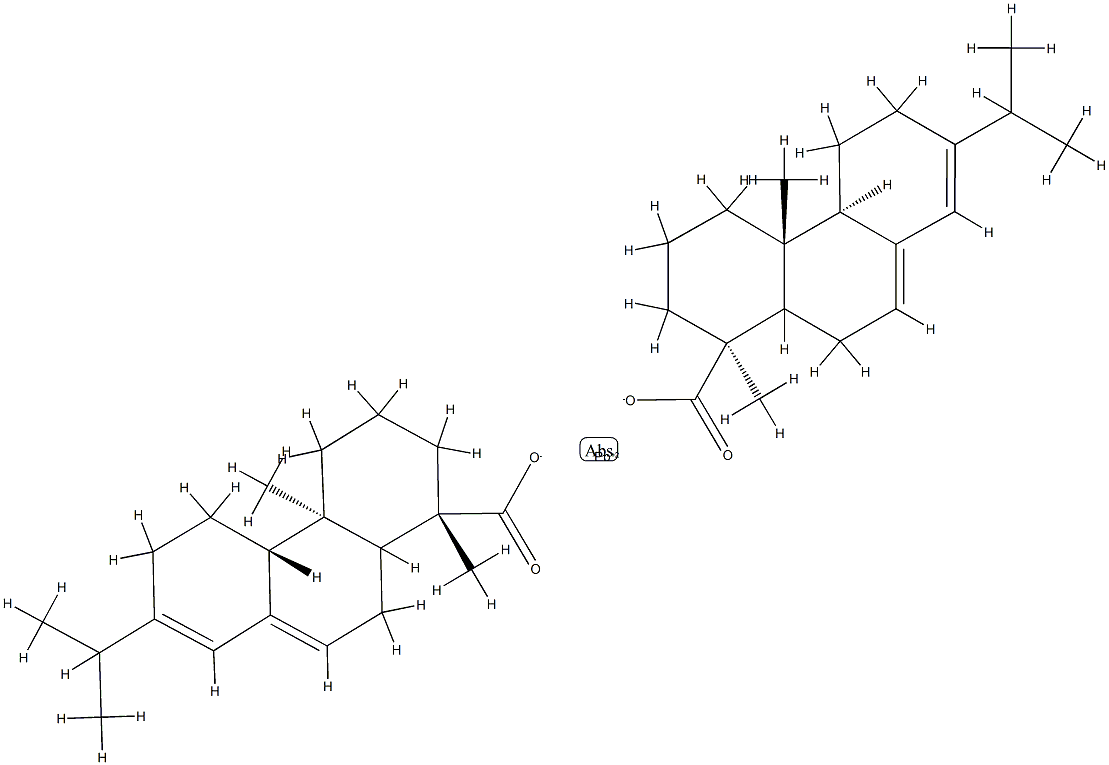Pinitol oil
- CAS NO.:8002-09-3
- Molecular Weight: 0
- MDL number: MFCD00147790
- EINECS: 692-006-0
- Update Date: 2025-12-17 09:49:32
What is Pinitol oil?
Chemical properties
The production of essential oil from this pine has been abandoned. The needles are probably distilled with those from spruce. A large addition of white pine needles to spruce needles tends to lower considerably the ester content of the distilled spruce oil.
The Uses of Pinitol oil
pine oil (Pinus palustris) is originally used as a solvent and a disinfectant, it is also deodorizing, anti-bacterial and anti-septic. Studies are now showing that certain fractions of pine oil may stimulate fibroblast growth, which would mean an increase in the turnover of epidermal cells. Pine oil is produced by distillation of small pine branches. It may be irritating to the skin and mucous membranes.
Definition
Extractives and their physically modified derivatives. A complex combination of terpenes produced by the high temperature distillation of oil of turpentine residues or by the catalytic hydration of pinenes. Composed primarily of isomeric tertiary and secondary cyclic terpene alcohols. May contain terpene hydrocarbons and ethers. Exact composition varies with production methods and turpentine source.
General Description
A clear colorless to light amber colored liquid. Contains mainly tertiary and secondary terpene alcohols Produced from the wood of pine trees by extraction or steam distillation. Flash point below 141°F. Less dense than water and insoluble in water. Hence floats on water. Vapors are heavier than air.
Air & Water Reactions
Flammable. Insoluble in water.
Reactivity Profile
Pine oil has a high content of various alcohols. Flammable and/or toxic gases are generated by the combination of alcohols with alkali metals, nitrides, and strong reducing agents. They react with oxoacids and carboxylic acids to form esters plus water. Oxidizing agents convert them to aldehydes or ketones. Alcohols exhibit both weak acid and weak base behavior. They may initiate the polymerization of isocyanates and epoxides.
Health Hazard
Vapors can cause headache, confusion, respiratory distress. Liquid irritates skin. If ingested, can irritate the entire digestive system and may injure kidneys. If liquid is taken into lungs, causes severe pneumonitis,pulmonary edema/hemorrhage.
Fire Hazard
Behavior in Fire: Forms heavy black smoke and soot.
Safety Profile
Moderately toxic by ingestion. Mddly toxic by skin contact. A weak allergen and a severe irritant to skin and mucous membranes. Human systemic effects by ingestion: excitement, ataxia, headache. A flammable liquid when exposed to heat or flame; can react with oxidizing materials. Moderate spontaneous heating. To fight fire, use foam, CO2, dry chemical. Used as an odorant, dtsinfectant, solvent, wetting agent, and frothing agent.
Properties of Pinitol oil
| Melting point: | −55 °C(lit.) |
| Boiling point: | 153-175 °C(lit.) |
| Density | 0.86 g/mL at 25 °C(lit.) |
| vapor density | 4.84 (−7 °C, vs air) |
| vapor pressure | 4 mm Hg ( −6.7 °C) |
| refractive index | n |
| Flash point: | 86 °F |
| Odor | at 100.00 %. pine |
| CAS DataBase Reference | 8002-09-3(CAS DataBase Reference) |
| EPA Substance Registry System | Pine oil (8002-09-3) |
Safety information for Pinitol oil
Computed Descriptors for Pinitol oil
New Products
4,4-Difluoropiperidine hydrochloride tert-butyl 9-methoxy-3-azaspiro[5.5]undecane-3-carboxylate Indole Methyl Resin N-Isopropylurea N,N-Dicyclohexylcarbodiimide(DCC) MELDRUMS ACID 5-METHYLISOXAZOLE-4-CARBOXYLIC ACID Magnessium Bis glycinate Zinc ascorbate 1-bromo-2-butyne 2-acetamidophenol 9(10H)-anthracenone Erythrosin B, 4-Piperidinopiperidine 2-((4-morpholinophenylamino) (methylthio) methylene) malononitrile 2,4-dihydroxybenzaldehyde 3-(4-morpholinophenylamino)-5-amino-1H-pyrazole-4-carbonitrile Methyl 2-methylquinoline-6-carboxylate 2,6-dichloro-4-nitropyridine 4-Bromo-2-chlorobenzonitrile 2-(benzylamino)acetic acid hydrochloride 4-(tert-Butoxycarbonylamino)but- 2-ynoic acid 3,4-dihydro-2H-benzo[b][1,4]dioxepine 1-Phenyl-1-cycloprppanecarboxylicacidRelated products of tetrahydrofuran








You may like
-
 3-(4-amino-1-oxoisoindolin-2-yl)-1-methylpiperidine-2,6-dione 98%View Details
3-(4-amino-1-oxoisoindolin-2-yl)-1-methylpiperidine-2,6-dione 98%View Details -
 1-methylindoline-2,3-dione 98%View Details
1-methylindoline-2,3-dione 98%View Details
2058-74-4 -
 614-19-7 98%View Details
614-19-7 98%View Details
614-19-7 -
 3112-85-4 Methyl phenyl sulfone 98%View Details
3112-85-4 Methyl phenyl sulfone 98%View Details
3112-85-4 -
 20677-73-0 (2,2-diethoxyethyl)methylamine 98%View Details
20677-73-0 (2,2-diethoxyethyl)methylamine 98%View Details
20677-73-0 -
 3-(4-(hydroxyamino)-1-oxoisoindolin-2-yl)piperidine-2,6-dione 98%View Details
3-(4-(hydroxyamino)-1-oxoisoindolin-2-yl)piperidine-2,6-dione 98%View Details -
 57381-49-4 2-bromo-4-chlorobenzonitrile 98%View Details
57381-49-4 2-bromo-4-chlorobenzonitrile 98%View Details
57381-49-4 -
 4,6-dichloropyrimidine-5-carbaldehyde 98%View Details
4,6-dichloropyrimidine-5-carbaldehyde 98%View Details
5305-40-8
